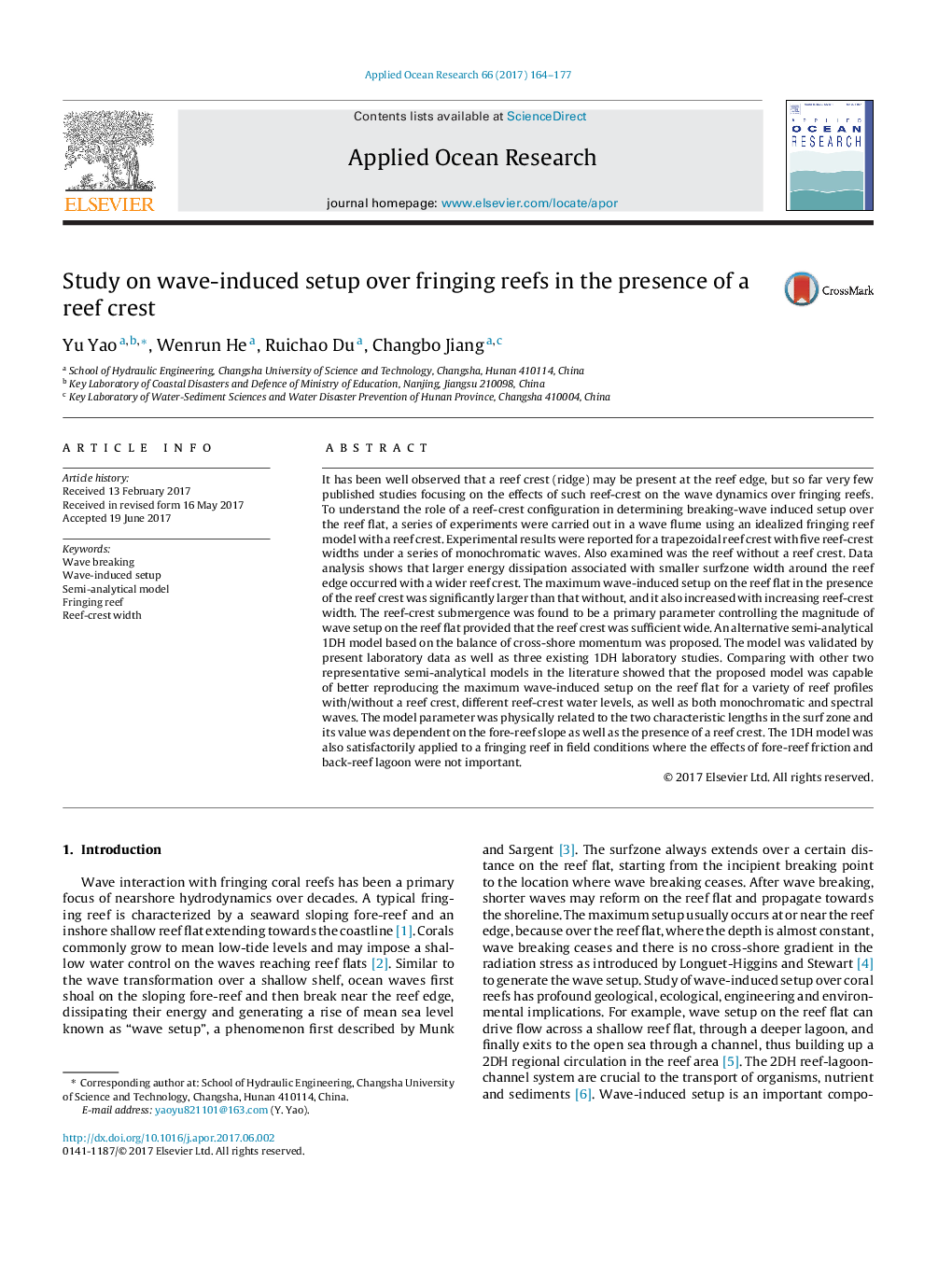| Article ID | Journal | Published Year | Pages | File Type |
|---|---|---|---|---|
| 5473259 | Applied Ocean Research | 2017 | 14 Pages |
Abstract
It has been well observed that a reef crest (ridge) may be present at the reef edge, but so far very few published studies focusing on the effects of such reef-crest on the wave dynamics over fringing reefs. To understand the role of a reef-crest configuration in determining breaking-wave induced setup over the reef flat, a series of experiments were carried out in a wave flume using an idealized fringing reef model with a reef crest. Experimental results were reported for a trapezoidal reef crest with five reef-crest widths under a series of monochromatic waves. Also examined was the reef without a reef crest. Data analysis shows that larger energy dissipation associated with smaller surfzone width around the reef edge occurred with a wider reef crest. The maximum wave-induced setup on the reef flat in the presence of the reef crest was significantly larger than that without, and it also increased with increasing reef-crest width. The reef-crest submergence was found to be a primary parameter controlling the magnitude of wave setup on the reef flat provided that the reef crest was sufficient wide. An alternative semi-analytical 1DH model based on the balance of cross-shore momentum was proposed. The model was validated by present laboratory data as well as three existing 1DH laboratory studies. Comparing with other two representative semi-analytical models in the literature showed that the proposed model was capable of better reproducing the maximum wave-induced setup on the reef flat for a variety of reef profiles with/without a reef crest, different reef-crest water levels, as well as both monochromatic and spectral waves. The model parameter was physically related to the two characteristic lengths in the surf zone and its value was dependent on the fore-reef slope as well as the presence of a reef crest. The 1DH model was also satisfactorily applied to a fringing reef in field conditions where the effects of fore-reef friction and back-reef lagoon were not important.
Related Topics
Physical Sciences and Engineering
Engineering
Ocean Engineering
Authors
Yu Yao, Wenrun He, Ruichao Du, Changbo Jiang,
